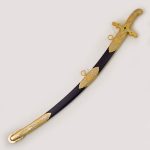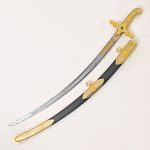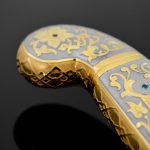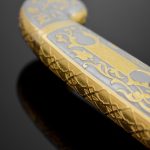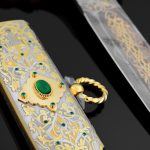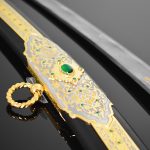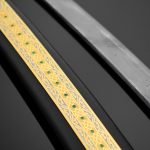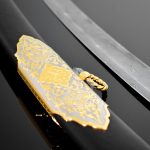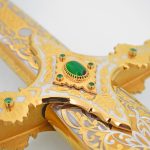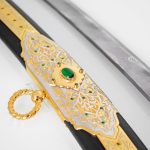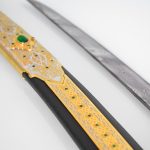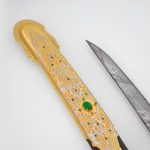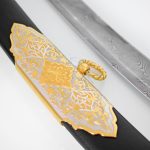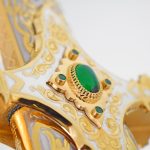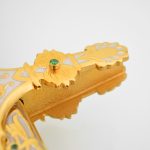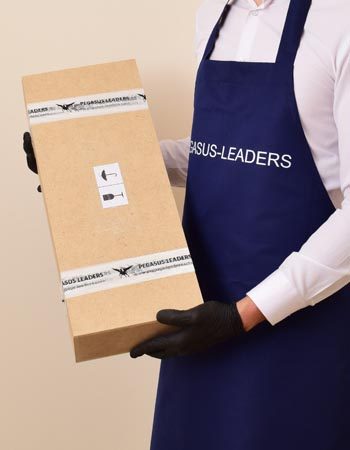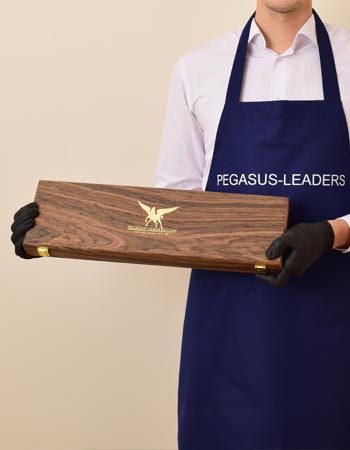In the East, there was an incredible variety of types of sabers, but it is customary to distinguish only a few so-called “classic” types: a Turkish saber klych (kylych) or kilidzh, an Iranian saber shamshir (shemshire), an Indian saber tal’war (talwar), Chinese dao and sword-saber Zulfakar. Improving the quality of steel made it possible to create long and light curved swords. From that time, they really began to be of interest to the riders. After all, they needed a blade both long, not heavy and well adapted for a chopping strike.
Metal elements of the hilt and the scabbard are cast from a metal alloy. The scabbard surface is covered with leather and decorated with jewelry stones. The surface of the blade, the crosspiece, the top of the hilt and scabbard are skillfully decorated with detailed oriental-style ornaments made using the Zlatoust metal engraving technique. The technique consists in manual engraving on the metal surface and plating with pure gold. Gilding retains its original appearance for a long time. Products are less susceptible to aggressive external influences, oxidation and corrosion.
Fine work of masters worthy of museums.
The saber is completed with a gift case made of wood. The case is upholstered in soft velvet inside. It will keep the saber for many years.





































